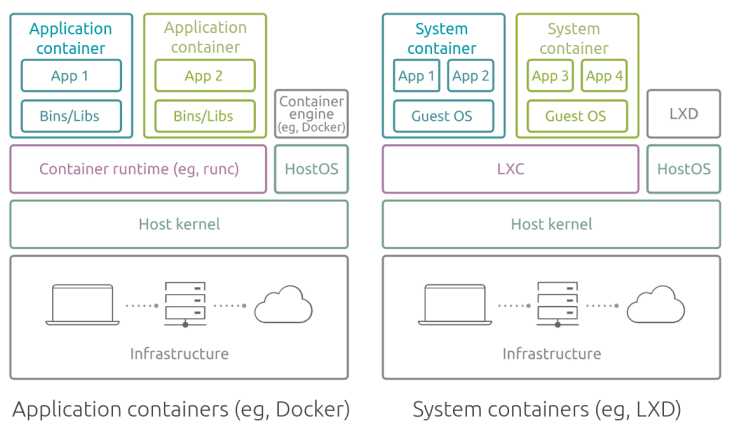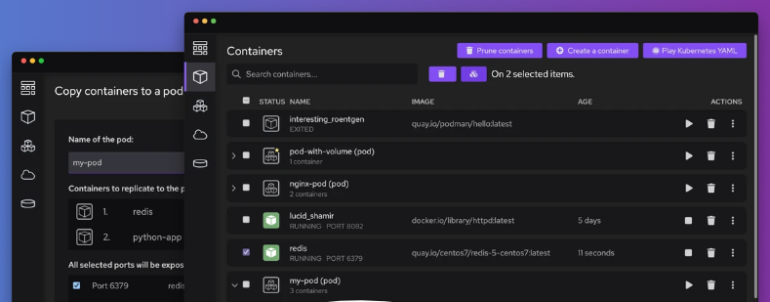
 technology
technology 
Docker is a widely-used open-source container platform. With it, developers can automate the deployment, scaling and management of applications within containers, which are isolated, lightweight environments with all the essentials for running an application, such as code, system tools, libraries, and more. Through containers, developers can minimize the risk of discrepancies and ensure that applications run consistently across various environments, including development, testing, and production.
Although Docker is a favorite of many developers, DevOps teams, IT operations teams, startups, small businesses and even large enterprises due to its portability, scalability and isolation, it does have some cons, such as complexity, learning curve, security challenges, resource overhead and more. Luckily, Docker is not the only DevOps tool of its kind, and this guide will break down Docker alternatives in terms of features, pros, cons and pricing.
Containerd is a minimalistic, lightweight, stable and reliable container runtime. It is ideal for developers who want core container functionalities minus the added complexities of Docker.
Some of Containerd’s top features include:
Containerd lets developers create and manage container snapshots at specific time points.
Developers also get image management capabilities for storing, distributing and managing container images.
Containerd’s modular architecture makes it extensible. Developers can use plugins and extensions to integrate with other container management platforms and tools to fit their unique needs. Containerd also meets Open Container Initiative specifications. This makes it compatible with OCI-compliant runtimes and container images, allowing it to integrate seamlessly with tools and platforms.
Containerd’s pros as a Docker alternative include:
Containerd is ideal for running containers in production environments since it was designed with stability and reliability in mind. The programmer tool is lightweight and simple due to its focus on core container capabilities, making it easy to use.
Containerd has a modular architecture. This lets developers integrate it with several container management tools and platforms, offering ultimate flexibility when building container ecosystems. And Containerd is also budget-friendly since it is open-source, free to use and eliminates the added expenses that come with Docker.
Containerd’s areas of improvement as a Docker alternative include:
Does Containerd offer more simplicity than Docker? Yes, but it still has a steep learning curve that could take time to conquer for those lacking experience with the Command-Line Interface (CLI) and container concepts. Speaking of the CLI, some may find Containerd’s less user-friendly than Docker’s, and it takes more work to manually manage containers.
Containerd is a runtime that focuses on container execution and offers fewer features than Docker. And its community and ecosystem are smaller than Docker’s, leaving you with fewer integrations and pre-built images.
Containerd is open-source software, allowing developers to use, modify and distribute it without licensing fees. Using other container technology, plus infrastructure, networking, storage, cloud services, support, etc., could incur additional costs to run containerized applications.
See Also: Docker: The Smart Person’s Guide
Linux LXD is a robust, resource-efficient and flexible container hypervisor and system container manager that lets developers run multiple isolated lightweight virtual machines through a single host. It is the ideal Docker alternative for those seeking optimized isolation with full-system containers and lightweight virtualization. Linux LXD particularly excels at multi-tenant environments and cloud computing.

Some of Linux LXD’s highlighted features as a Docker alternative include:
Since Linux LXD can support full-system containers, developers can run entire operating systems within containers. Such support beats out application-level containers in terms of control and isolation, and it makes LXD ideal for hosting complex applications. Linux LXD lets users manage multiple LXD hosts as a single unit. Such clustering support offers seamless container migration, load balancing and high availability, making container deployments more reliable and scalable.
Developers can use LXD to take snapshots of containers at specific points in time, and checkpoint support allows for the restoration of live snapshots later on for quick and easy backup, recovery and rollbacks. Linux LXD also offers support for overlay networks, physical interfaces, virtual bridges and other network options.
Linux LXD’s advantages include:
Linux LXD’s support of clustering results in high availability for containers, load balancing and optimized resource allocation and performance. When using multiple processors, it executes applications faster than Docker.
Developers can use LXD’s RESTful API to integrate with other programmer tools and systems to extend functionality, and it offers more efficiency for virtualization scenarios than running multiple virtual machines since its containers consume fewer resources.
Some of the disadvantages of Linux LXD as a developer tool include:
Linux LXD is challenging to use. As such, it is not recommended for beginners with little experience working with Linux and containers. The Linux LXD interface is less polished than you will find in competing programmer tools, and the documentation could also be better. The container tool is also less popular than Docker and has a smaller community, which could limit support and resources, such as pre-built images.
Linux LXD is free, open-source container software. Developers can use the tool to create and manage systems on Linux containers at no cost without worrying about licensing fees.
While Linux LXD is free, keep room in your budget for additional hardware, operating system, developer tool, etc. costs should you decide to use LXD as part of a larger solution or infrastructure.
Podman is an open-source containerization tool and Docker alternative with daemonless architecture, rootless containers, Kubernetes integration and drop-in compatibility with Docker CLI commands. It is ideal for security-conscious developers working with Kubernetes who are familiar with Docker workflows.

Some of Podman’s top features include:
Podman’s operation in a daemonless mode eliminates the need for a central daemon for container management, which reduces security worries and the risk of a single failure point.
Podman supports rootless containers, which also reduces security risks.
Developers who work extensively with Kubernetes will enjoy the seamless compatibility between the two tools, and Podman is also drop-in compatible with Docker CLI commands.
Podman’s pros as a Docker alternative include:
By operating in daemonless mode, Podman minimizes the security risks and complexity linked to a central daemon. And with its support for rootless containers, users can run containers without superuser privileges. This minimizes the attack surface and risks linked to running containers with root permissions.
Podman’s “pods” align with the pod concept used in Kubernetes. This makes Podman a sensible choice for those already working with Kubernetes. And with some configuration, Podman can access container images from multiple registries, including Docker Hub.
Podman’s cons include:
Users new to Podman or containerization concepts may need to invest some time in getting comfortable with the tool. Although it can run on macOS and Windows, Podman focuses primarily on Linux. As such, Docker may offer smoother integration due to its native support for macOS and Windows environments. And since Docker has a larger ecosystem, using Podman could result in less support and fewer pre-built images, tools and integrations.
Like other Docker alternatives on this list, Podman is open-source and free to use. However, your software development team may incur additional costs if you decide to use other resources (infrastructure, storage, cloud services, etc.) to run and manage containerized applications.
Containers offer several benefits to software development teams. They promote DevOps, which can lead to faster application development, testing and production. Since they are so lightweight compared to virtual machines, containers can also lead to much faster startup times, which makes it easier to issue frequent updates and improvements. And since DevOps and IT teams know that applications run the same in containers, they can enjoy more consistency.
Those are some of the benefits of container software. How can you pick the proper programmer tool to achieve them? By looking for several key features, which start with compatibility with industry standards like Open Container Initiative specifications. The container software should support a trusty container runtime, such as Docker. It should be scalable and have the power to handle several containers without sacrificing performance.
Container software should have security features like support for user namespaces, rootless containers, etc. And it should have robust image management capabilities in terms of creation, distribution and versioning.
Other features to look for when shopping around for container software include orchestration if you plan on managing multiple containers and deployments, networking capabilities (DNS resolution, service discovery, support for overlay networks, etc.), and monitoring/logging. The ideal container software should also have a large, active community, solid support and a vast ecosystem of plugins, tools and third-party integrations. Lastly, make sure the cost and licensing of the container fit your software development team’s needs.
The Docker alternatives listed above are some of the best available. Review each alternative closely to ensure it fits your needs in terms of features, and its pros outweigh the cons. Because while Docker is a top DevOps tool, it is not the only one at your disposal.
24World Media does not take any responsibility of the information you see on this page. The content this page contains is from independent third-party content provider. If you have any concerns regarding the content, please free to write us here: contact@24worldmedia.com